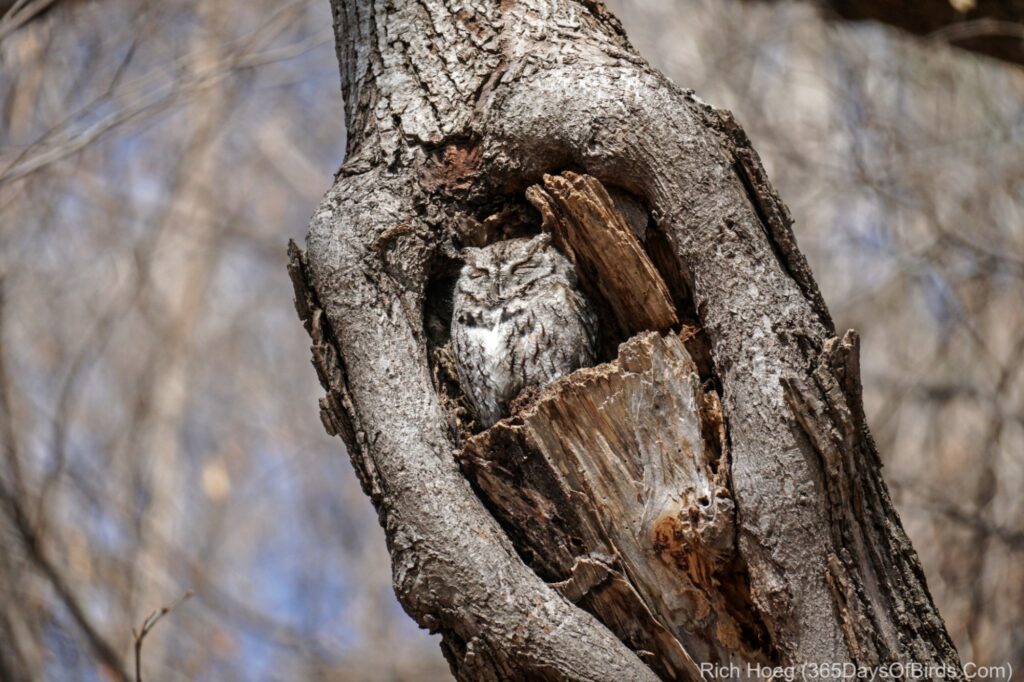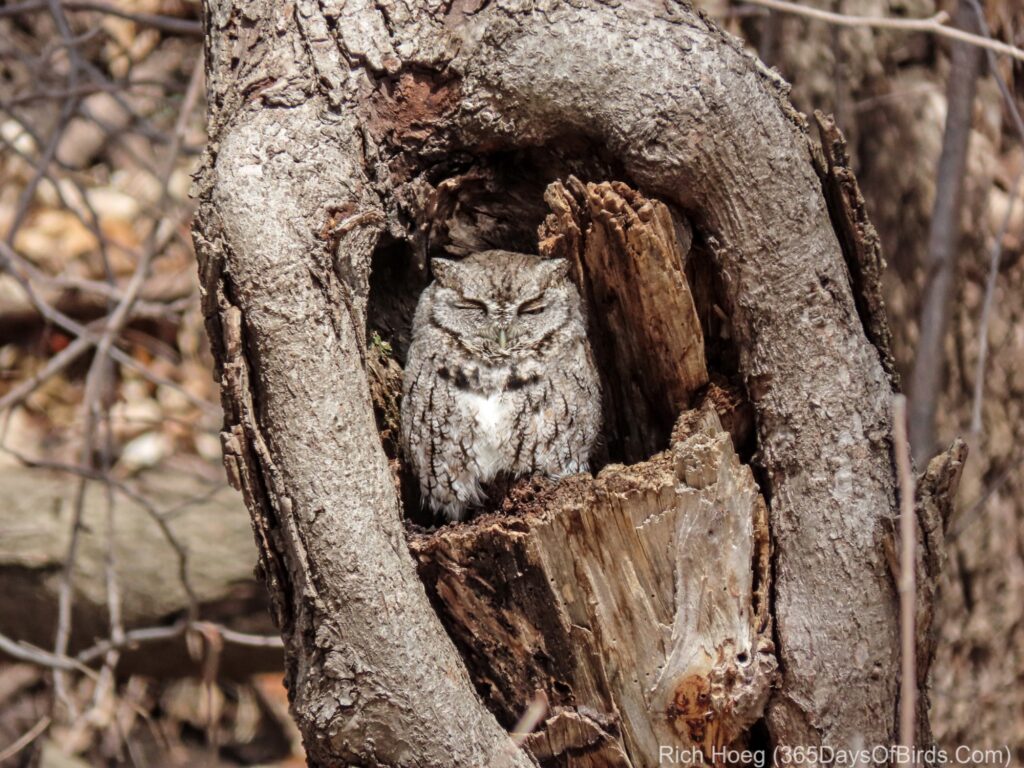Big thanks to Peter, Deb and Tammy for their assistance in helping me find my lifer down in the Twin Cities today … a sleeping Eastern Screech Owl. These owls do not live in the Boreal Forest. Thus, seeing one in Duluth would never be possible. Like yesterday’s wood duck, these owls use cavities for nesting. Over the past two weeks I have also learned about one of their preferred habitats; they very much like nesting next to sunny, dry river banks with big old mature trees. While I never saw a Screech Owl last weekend in Milwaukee, my evening hike let me listen to a number of these birds calling after sunset.
Just a fyi … this is the way to photograph a sleeping owl during the day. While eyes would be nice, do not yell or take other actions to wake up the bird. One should just enjoy the experience, and come back around sunset if you want to see an active owl.
Discover more from 365 Days of Birds
Subscribe to get the latest posts sent to your email.
I hear tell of this screech owl, but i don’t know how to find where it is. Guess i don’t know the right people. either way, i only have binocs and a Canon Sure Shot camera. is this the one reported on ebird to be by the Mississippi River Flats area?
I was going to head up to the Bog next week, but now i’m going to wait until next year as i heard the GGO moved more into the woods and i just don’t have a camera strong enough.
by the way, i grew up in Port Washington, WI and my sister still lives in Milwaukee, i go there all the time. where did you hear the Owls in Milwaukee area? they have friends who live on the river near Bay Shore
Holly (et al): Owls whether be in the Bog, or down south in the Twin Cities area get much more difficult to find unless one knows exactly where a nest is located. We have lots of resident Great Gray Owls, but all the adults are now back deep in the Bog starting to think about raising a family. Their diet also changes from meadow voles (found my roadsides) to red back voles (found in forested bog areas).
With respect to the Screech owls I was a bit lucky. Early March is the best time of year to look for these birds, when the females generally have not laid any eggs. By later March the females are deep within cavities … incubating (thus, not viewable). The males will often find a perch / cavity within sight of the nest hole, but when they get up high in trees their natural camouflage makes them very hard to find. Given I do not live in Minneapolis, I had no choice but to visit in late March. Once the young hatch, and grow a bit, it will be easier to find the owls. Right at sunrise the owlets will demand food, and make their demands known. However, sunrise gets early. Some of my best experiences last Spring and Summer with owlets near my home in Duluth took place between 4:45 and 6:00 am. Thus, persevere, but also whenever possible pay attention to the life cycles of the owls. Cornell’s All About Birds is a great resource to learn more about any bird species.
I went hiking in the Milwaukee Cambridge Woods area at sunset. I heard at least three different screech owls calling. The habitat and sun positioning is very similar to the Mississippi River hiking area on the east bank.
I love Coal Dock Park in Port Washington during spring migration. Right at sunrise one may get some super views of ducks and pelicans fishing near the Powerplant outflow. However, on some mornings one sees little. Depends upon weather and what’s migrating … south winds good!
I’ve been enjoying your bird photos and educational information. My husband and I liked watching the data on the bird migration app in your recent post. Admittedly, I have not considered myself a birder (due to a few traumatic incidents raising chickens and pigeons as a kid). But after recently finding your blog, and a somewhat similar blog in Nepal, has me intrigued and learning a lot. Thank-you.
Nepal!? Please email me the url. That would be cool. Will send you my email address.
So lovely.